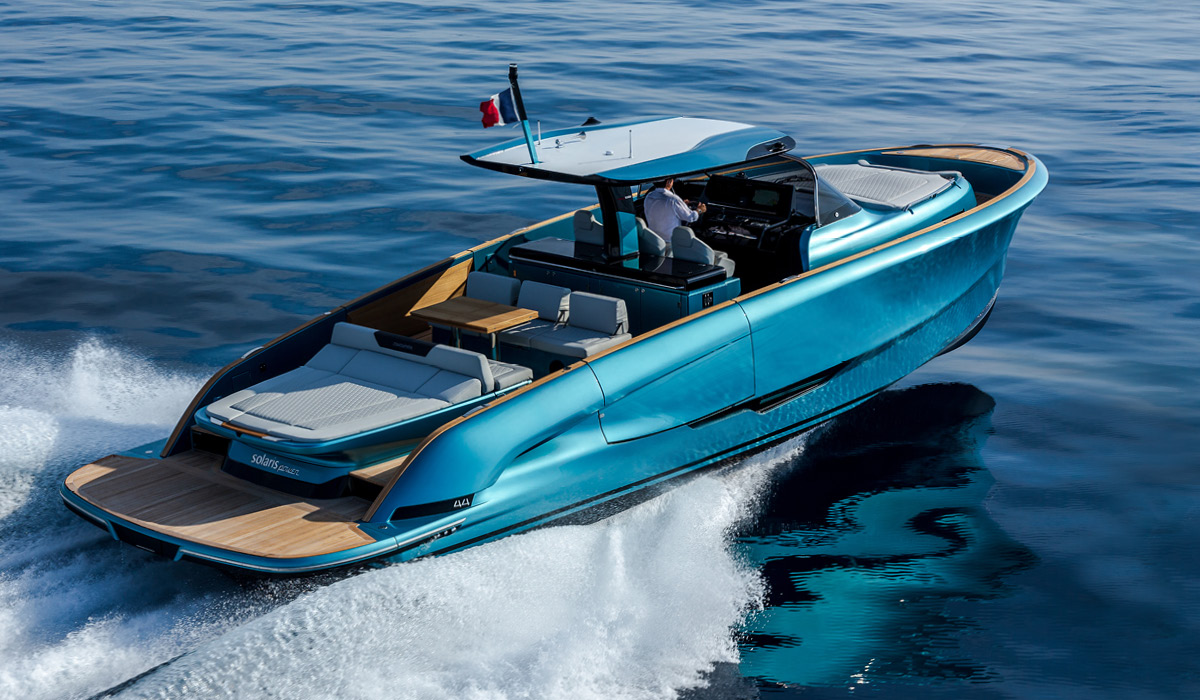

All the seaworthy features of the Solaris Power range with the largest living area of the category. Never before a 44-footer offered so much
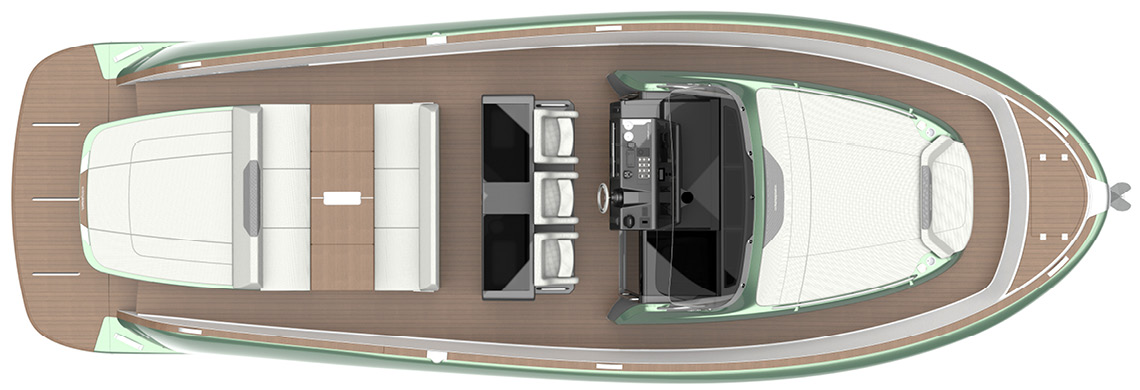
Deck layout with optionals
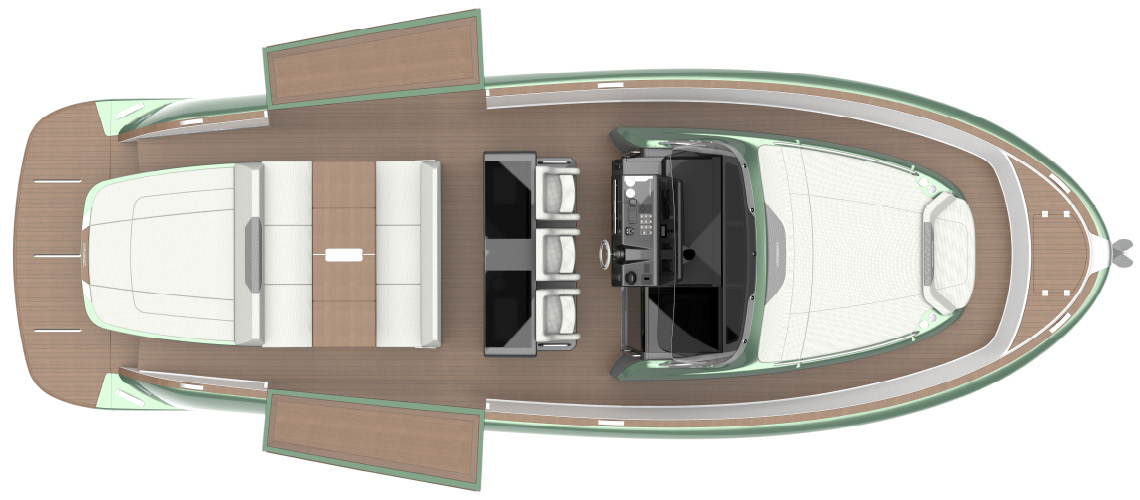
Deck layout with optionals including fold-out bulwarks
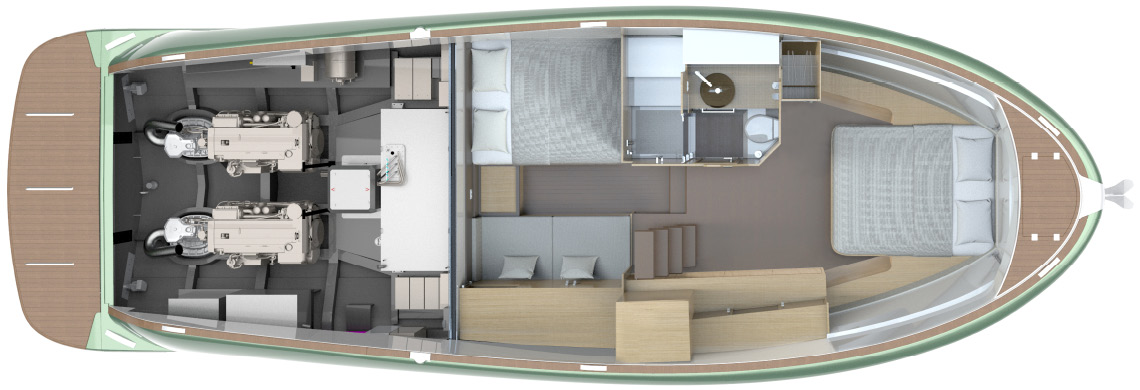
A cabin version with optionals
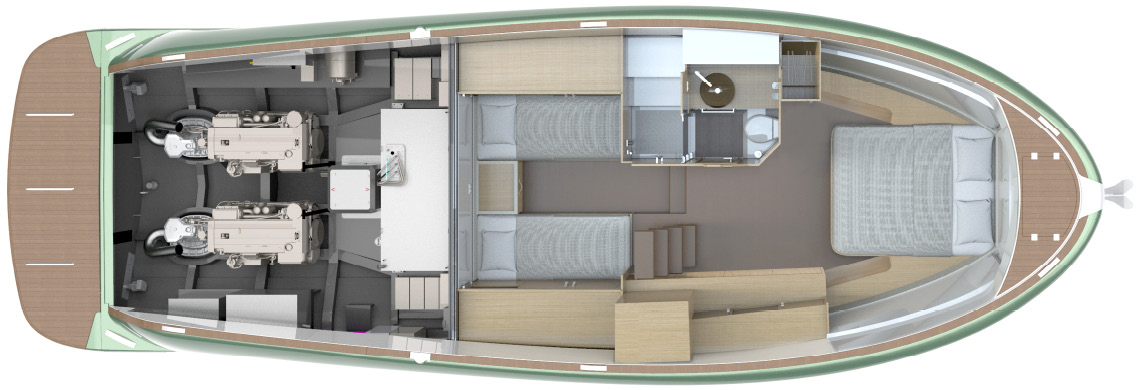
B cabin version with optionals
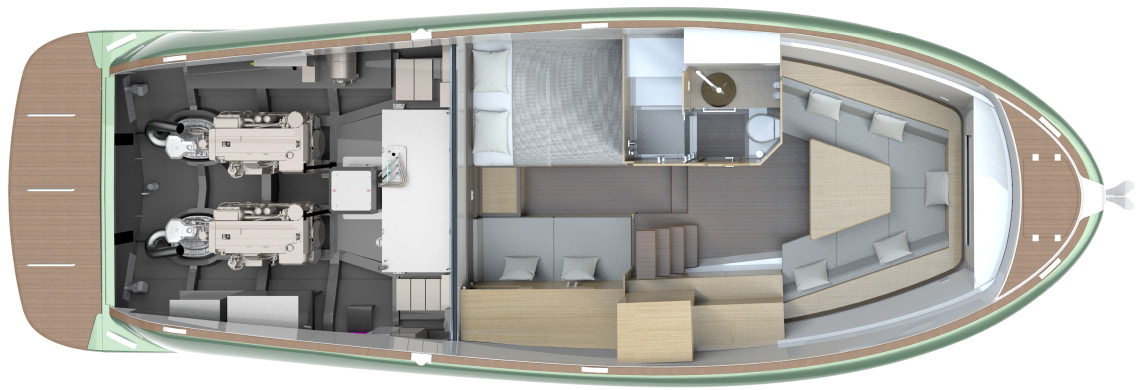
C cabin version with optionals
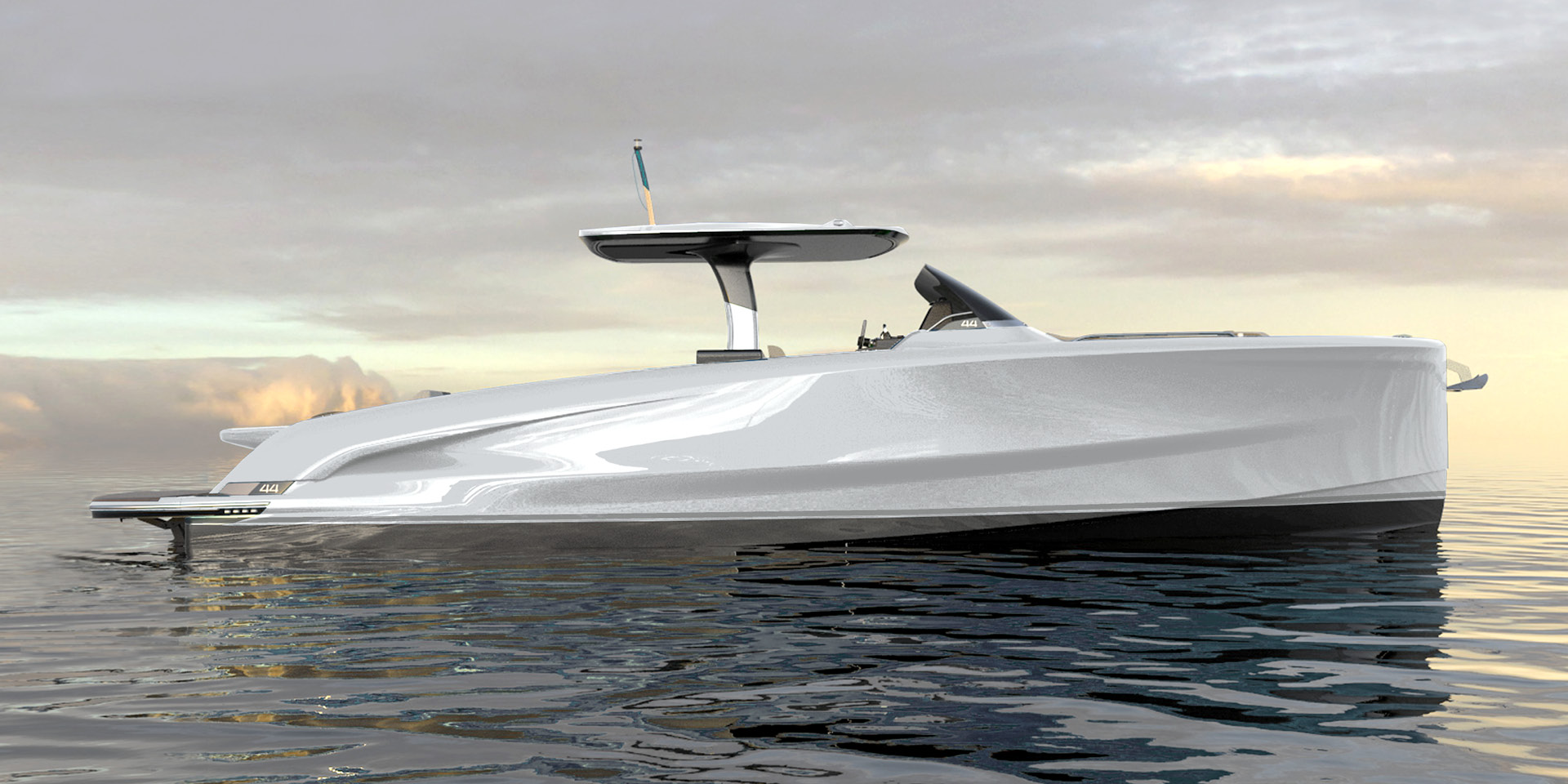
| Description | Data | ||
|---|---|---|---|
| Length overall: | 13,47 m / 44'2" | ||
| Water line length: | 11,95 m / 39’2” | ||
| Beam: | 4,35 m / 14'3” | ||
| Draft: | 1,03 m / 3’4” | ||
| Approx. light displacement: | 11.500 kg / 25,353 lbs | ||
| Approx. load displacement: | 14.000 kg / 30,864 lbs | ||
| Fuel capacity: | 1.200 L / 317 US gal | ||
| Water capacity: | 330 L / 87 US gal | ||
| Diesel Engines: | 2 x Volvo Penta D6 IPS 500 272 kW / 370 hp 3500 rpm | ||
| Diesel Engines (Optional): | 2 x Volvo Penta D6 IPS 600 320 kW / 435 hp 3500 rpm | 2 x Volvo Penta D6 IPS 650 353 kW / 480 hp 3800 rpm | |
| Max speed: | 33 kn - IPS 500 | 36,5 kn - IPS 600 | 39 kn - IPS 650 |
| Cruising speed: | 22 kn - IPS 500 | 25 kn - IPS 600 | 26,5 kn - IPS 650 |
| Cabins: | 2 | ||
| Bathrooms: | 1 | ||
| Max persons capacity: | 12 | ||
| Design: | Brunello Acampora / Victory Design - Solaris Power Design Team | ||
| Solaris Power reserves the right to change specifications without notice. | |||
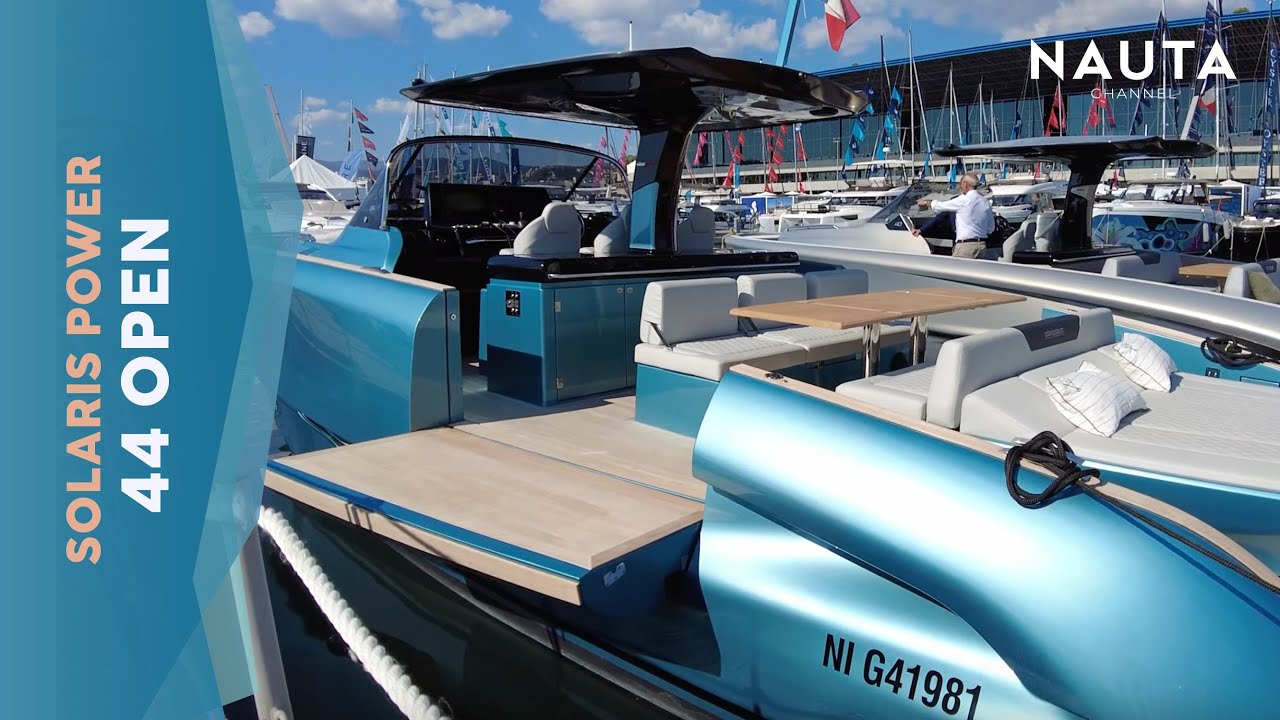
NAUTA CHANNEL – 44 OPEN – VIDEO
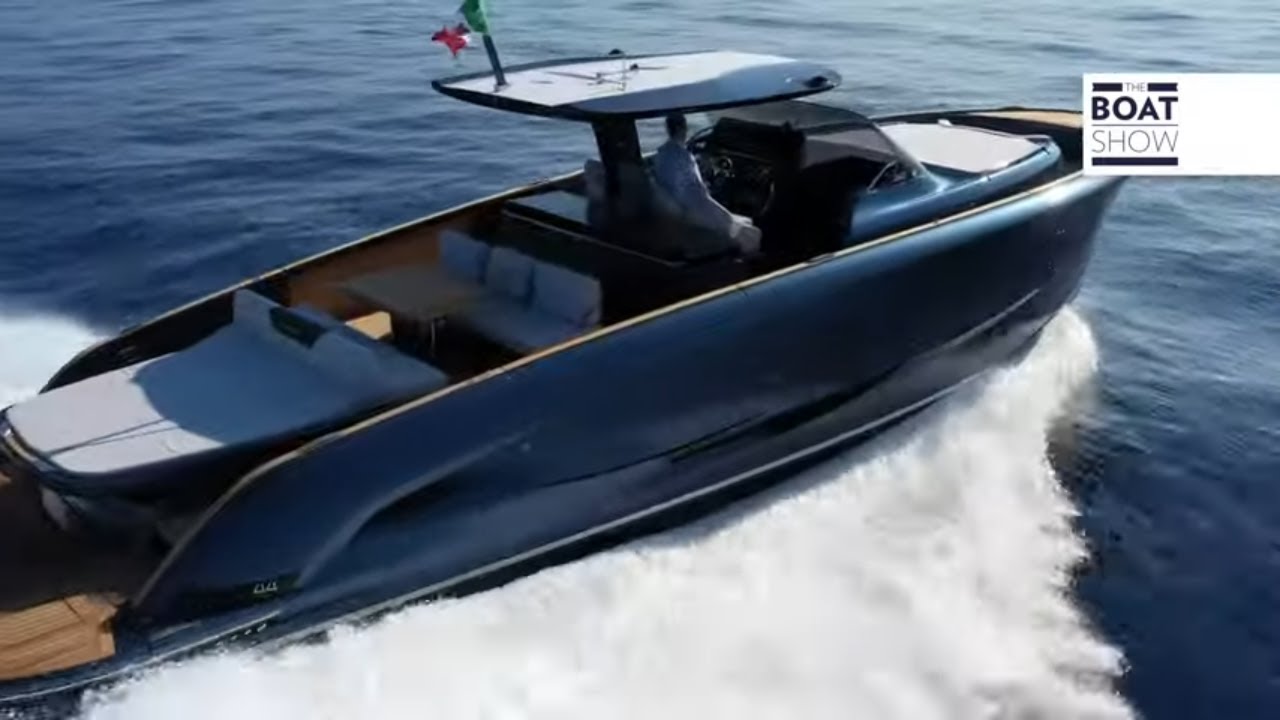
THE BOAT SHOW – 44 OPEN – VIDEO
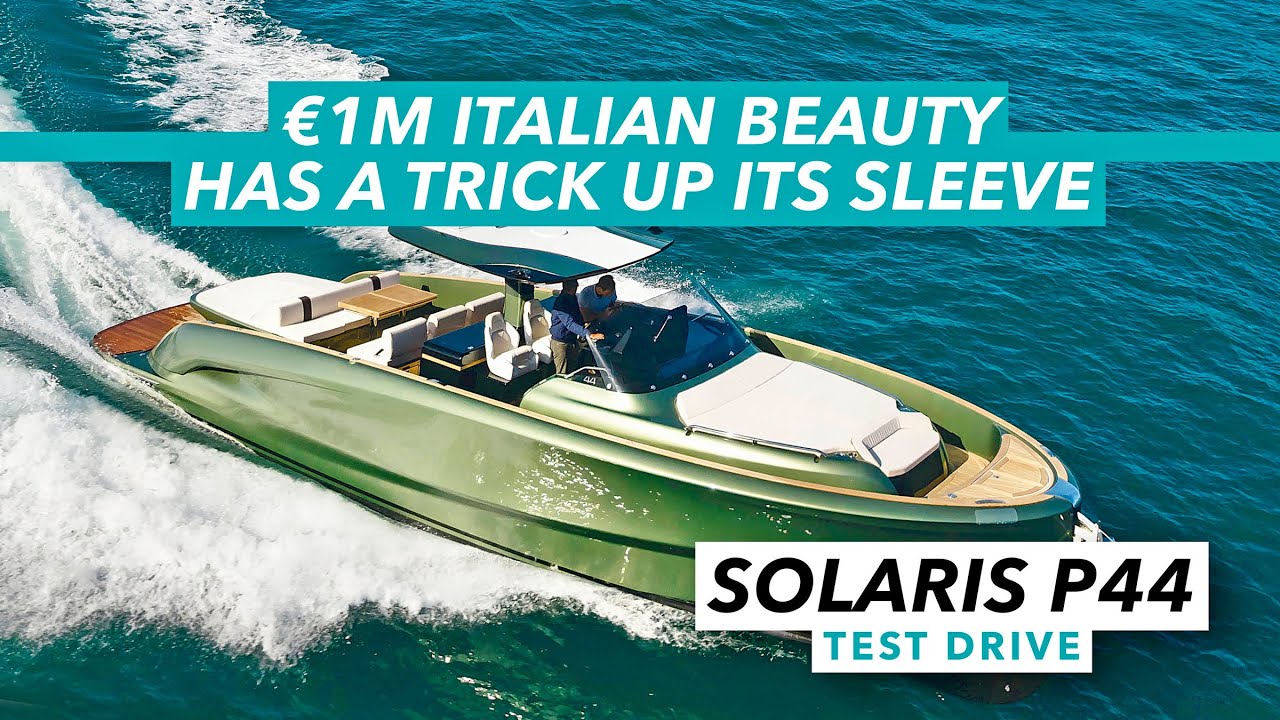
MOTOR BOAT & YACHTING – 44 OPEN – VIDEO

YACHT REVUE – 44 OPEN
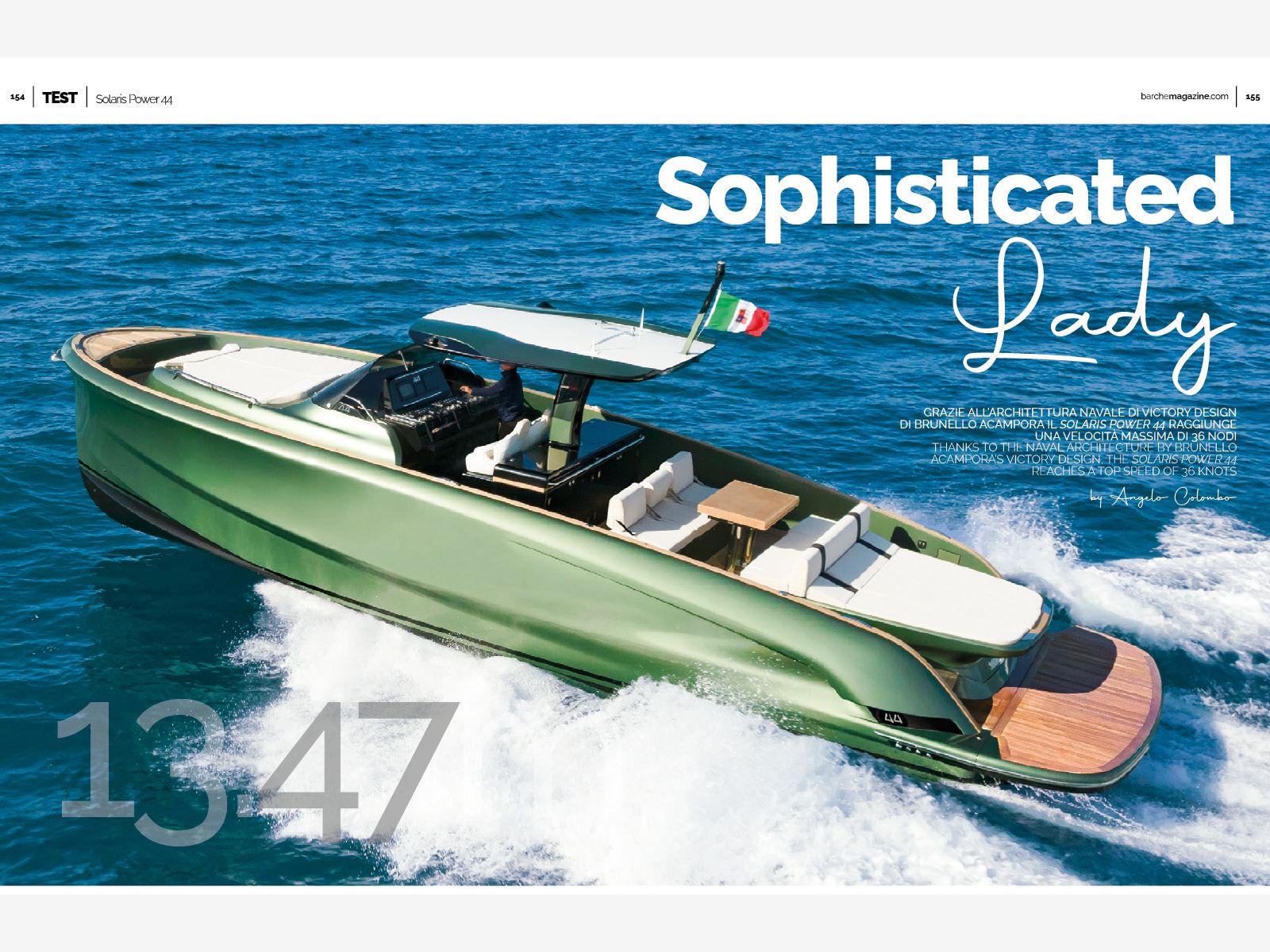
BARCHE – 44 OPEN
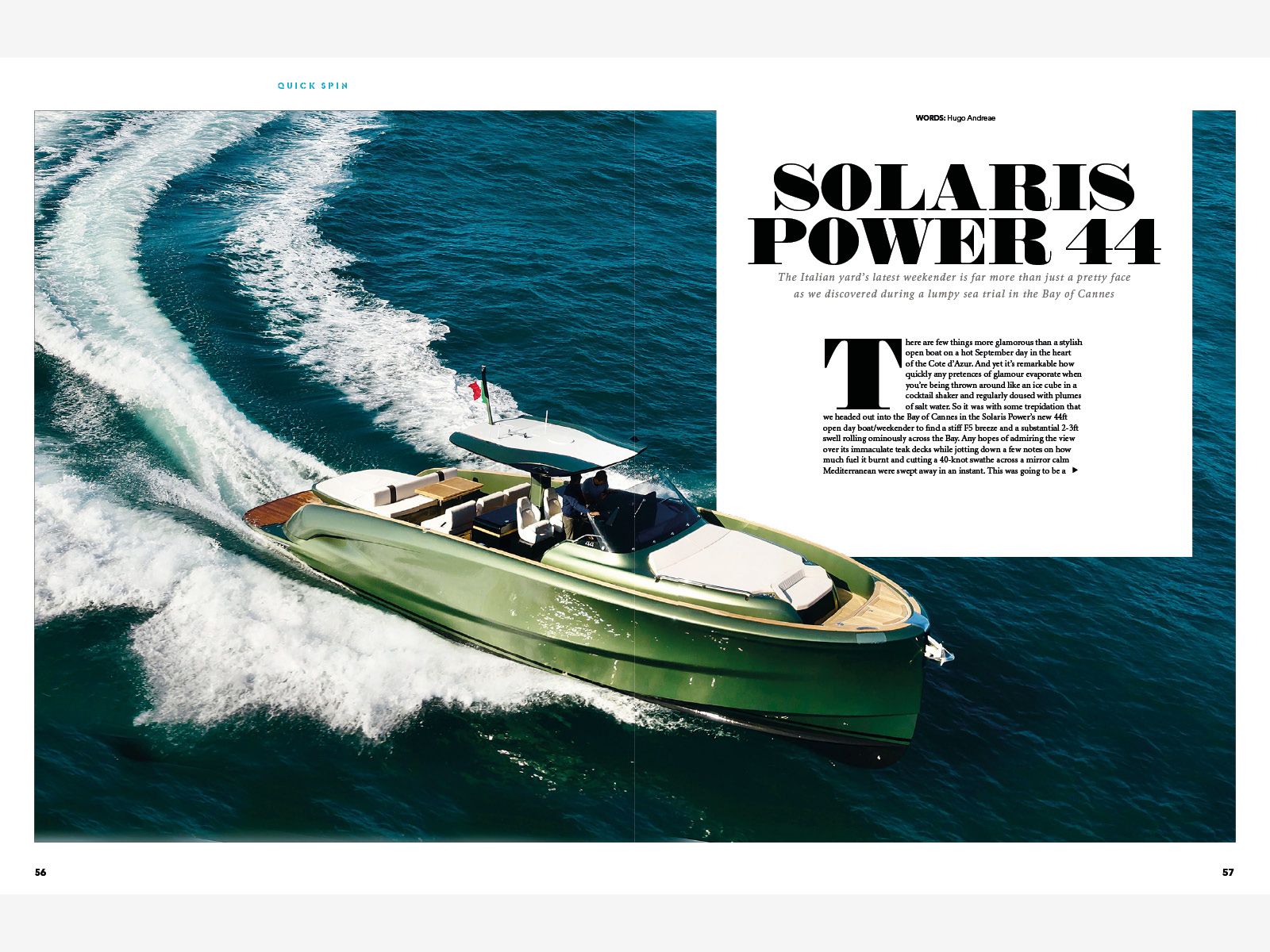
MOTOR BOAT & YACHTING – 44 OPEN
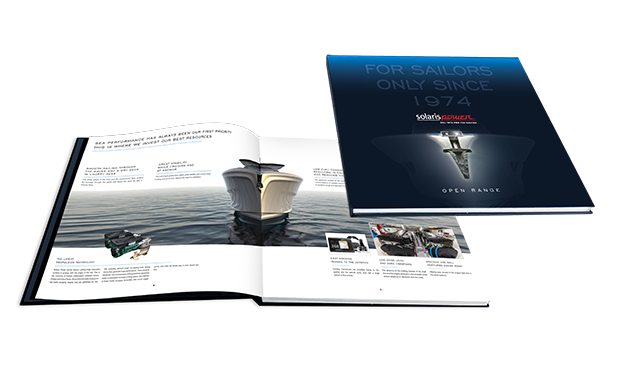
Open range catalog download
By clicking on the DOWNLOAD button you can download the Solaris Power catalog in electronic PDF format. In order to view it correctly, Adobe Reader may be required on your computer.
Solaris Power
is part of Solaris Group visit our sailing website: www.solarisyachts.com
- T. +39 0543 807062
- E. [email protected]
- Stay updated on our latest news:
© 2024 ALL RIGHTS RESERVED. Site developed by: DLEA.IT
- Terms and Conditions
Subscribe to Solaris Power newsletter
Please fill-in the form, you will receive shortly an e-mail with the link to download the solaris power catalogue.
Please use a modern browser to view this website. Some elements might not work as expected when using Internet Explorer.
- Landing Page
- Luxury Yacht Vacation Types
- Corporate Yacht Charter
- Tailor Made Vacations
- Luxury Exploration Vacations
- View All 3697
- Motor Yachts
- Sailing Yachts
- Classic Yachts
- Catamaran Yachts
- Filter By Destination
- More Filters
- Latest Reviews
- Charter Special Offers
- Destination Guides
- Inspiration & Features
- Mediterranean Charter Yachts
- France Charter Yachts
- Italy Charter Yachts
- Croatia Charter Yachts
- Greece Charter Yachts
- Turkey Charter Yachts
- Bahamas Charter Yachts
- Caribbean Charter Yachts
- Australia Charter Yachts
- Thailand Charter Yachts
- Dubai Charter Yachts
- Destination News
- New To Fleet
- Charter Fleet Updates
- Special Offers
- Industry News
- Yacht Shows
- Corporate Charter
- Finding a Yacht Broker
- Charter Preferences
- Questions & Answers
- Add my yacht
- Yacht Charter Fleet
Video: First look at 140m superyacht SOLARIS totally unveiled
- Share this on Facebook
- Share this on X
- Share via Email
By Nina Done 24 March 2021
New video footage of the elegant 140m mega yacht SOLARIS reveals more of her spectacular design features following her official launch from the Lloyd Werft shipyard in February — which was slightly hampered by a case of heavy fog. She has now left the German shipyard to undergo sea trials before her expected delivery this summer.
Penned by Australian designer Marc Newson in his debut superyacht project, SOLARIS is the culmination of four years under construction where the project has been mired in secrecy. Her preparation for sea trials comes after much excitement that's rippled through the yachting industry.
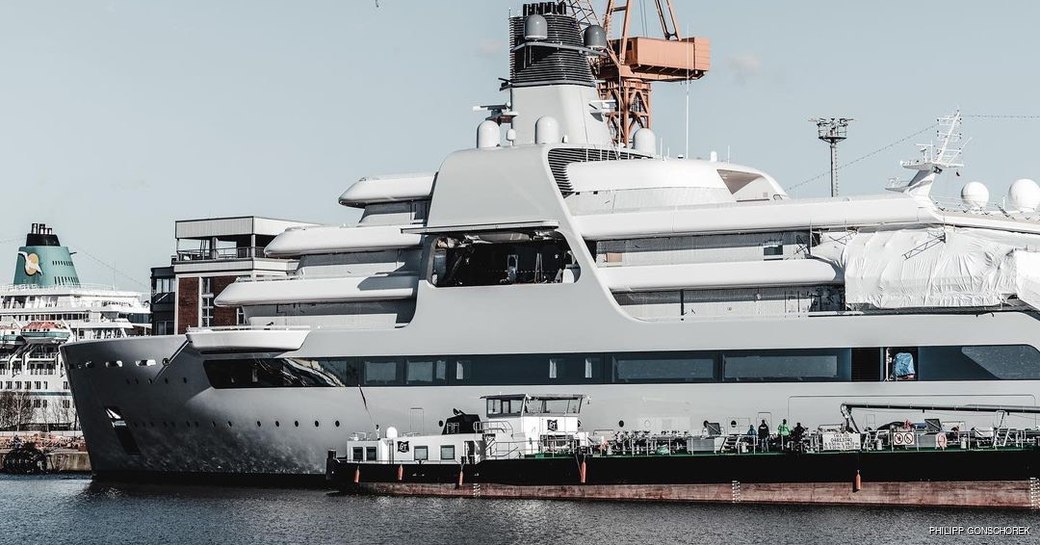
The video footage reveals an aft glass-bottomed pool, 2 beach clubs, an expansive swim platform and pronounced wing stations on either side offering enhanced visibility for the captain whilst maneuvering.
In addition, floor-to-ceiling windows will allow plenty of natural light throughout her interiors, with exterior glass railings offering unique views of her surroundings whilst enjoying the alfresco entertainment.
18 megawatts of combined propulsion...will propel SOLARIS at speeds unheard of for superyachts of this size.
SOLARIS boasts a whopping 8 decks, helipad, plus hangar and generous beach club aft. She also has a tender garage equipped with a crane for launching tenders, cleverly designed to be hidden away from the main guest areas.
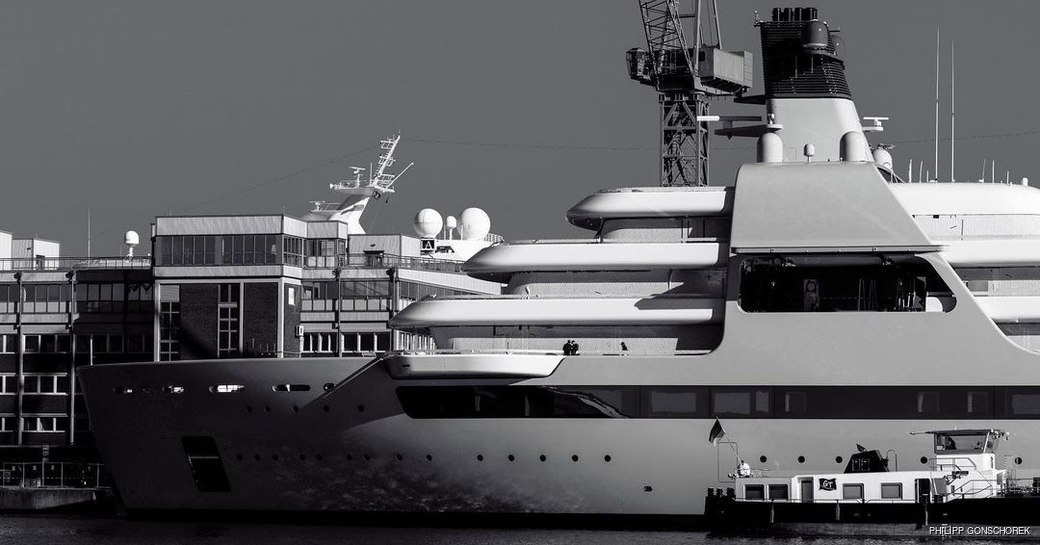
Her elegant appearance is accentuated by the large arch that wraps across the beam midships, providing a dramatic contrast with the sleek lines of her pale grey hull and crisp white superstructure.
Enhanced power
18 megawatts of combined propulsion delivered through two state of the art Azipods managed by an ABB Engine Management System will propel SOLARIS at speeds unheard of for superyachts of this size.
Availability for yacht charter?
SOLARIS is being built for an experienced owner and it is believed that she will not be offered for charter by those in the industry. If you would like to visit areas outside of the usual cruising grounds of the Mediterranean and Caribbean then please take a look our selection of expedition yachts for charter that are currently available.
For further advice please get in touch with your chosen yacht charter broker . Video by: DrDuu Photos: Philipp Gonschorek
Explorer yachts

73m Picchiotti 2014
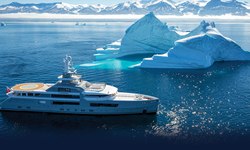
75m Abeking & Rasmussen 2016
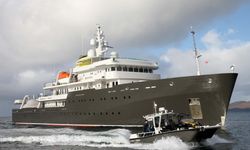
78m Piriou 2015

73m Admiral Yachts 2018
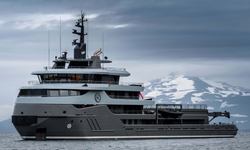
68m Royal Niestern Sander 2012 / 2020
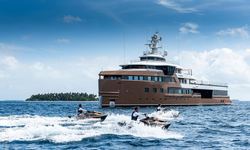
77m Damen Yachting 2020
RELATED STORIES
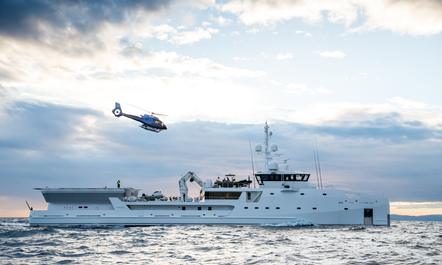
Previous Post
Ultra modern 45m AQUARIUS newly available for charter in Turkey this summer
Greece to welcome tourist yacht charters from mid-May
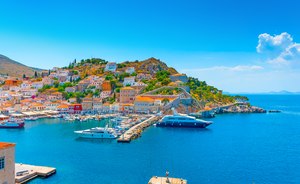
EDITOR'S PICK
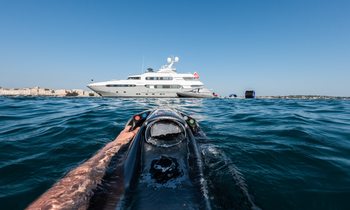
Latest News

21 August 2024

19 August 2024
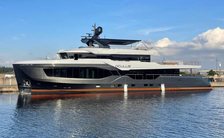
13 August 2024
- See All News
Yacht Reviews
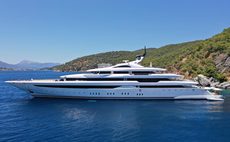
- See All Reviews

Charter Yacht of the week
Join our newsletter
Useful yacht charter news, latest yachts and expert advice, sent out every fortnight.
Please enter a valid e-mail
Thanks for subscribing
Featured Luxury Yachts for Charter
This is a small selection of the global luxury yacht charter fleet, with 3697 motor yachts, sail yachts, explorer yachts and catamarans to choose from including superyachts and megayachts, the world is your oyster. Why search for your ideal yacht charter vacation anywhere else?

136m | Lurssen
from $4,368,000 p/week ♦︎
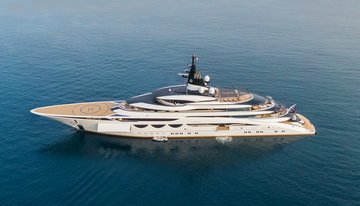
115m | Lurssen
from $2,831,000 p/week ♦︎
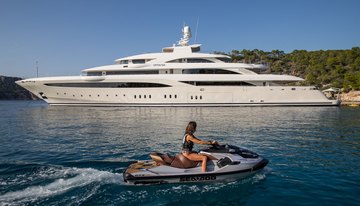
85m | Golden Yachts
from $980,000 p/week ♦︎
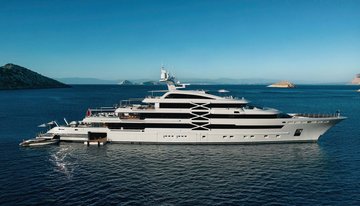
88m | Golden Yachts
from $1,179,000 p/week ♦︎
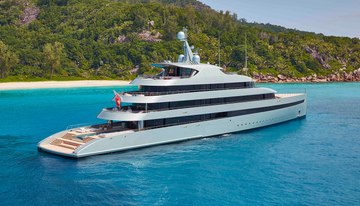
84m | Feadship
from $1,072,000 p/week ♦︎

93m | Feadship
from $1,501,000 p/week ♦︎
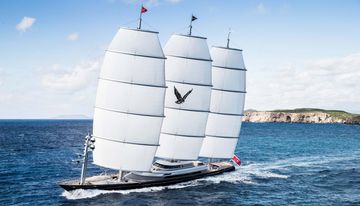
Maltese Falcon
88m | Perini Navi
from $490,000 p/week
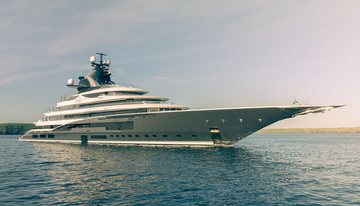
122m | Lurssen
from $3,000,000 p/week
As Featured In
The YachtCharterFleet Difference
YachtCharterFleet makes it easy to find the yacht charter vacation that is right for you. We combine thousands of yacht listings with local destination information, sample itineraries and experiences to deliver the world's most comprehensive yacht charter website.
San Francisco
- Like us on Facebook
- Follow us on Twitter
- Follow us on Instagram
- Find us on LinkedIn
- Add My Yacht
- Affiliates & Partners
Popular Destinations & Events
- St Tropez Yacht Charter
- Monaco Yacht Charter
- St Barts Yacht Charter
- Greece Yacht Charter
- Mykonos Yacht Charter
- Caribbean Yacht Charter
Featured Charter Yachts
- Maltese Falcon Yacht Charter
- Wheels Yacht Charter
- Victorious Yacht Charter
- Andrea Yacht Charter
- Titania Yacht Charter
- Ahpo Yacht Charter
Receive our latest offers, trends and stories direct to your inbox.
Please enter a valid e-mail.
Thanks for subscribing.
Search for Yachts, Destinations, Events, News... everything related to Luxury Yachts for Charter.
Yachts in your shortlist

Berthon Winter Collection

Latest issue

August 2024
In the August 2024 issue of Yachting World magazine: News Few finish a tempestuous Round The Island Race European rules are eased for cruising to France and Greece Olympic sailing…

Yachting World
- Digital Edition

Solaris 50 review: fast, fun cruising
- Rupert Holmes
- January 13, 2023
A sleek 50-footer with comfort, rewarding sailing qualities and performance, plus easy handling the Solaris 50 offers fun and rewarding sailing

Product Overview
Price as reviewed:.
The drive to include all the features we now expect of new yachts, such as easy handling, big cockpits for al fresco dining and huge accommodation volumes, all too often risks compromising the fundamentals of creating a yacht that’s fun and rewarding to sail. When developing its latest range of 40-60 footers, however, Solaris tackled these aspects as a top priority as is on display in the middle model, the Solaris 50.
An optimised helming experience is intended as a key feature. Designer Javier Soto Acebel deliberately pushed the helm stations as far out to the sides of the hull as possible to maximise the view and make it possible to see the full length of the headsail luff – something that’s difficult on many of today’s yachts. Despite the boat’s 16 tonne displacement, the steering is direct and responsive, with twin rudders offering excellent control.
This direct focus on the owner’s experience when sailing the boat also hints at the yard’s understanding that to be successful in today’s market requires more than producing great physical products – the overall ownership experience counts as well. More on that later.
There’s one drawback that, on paper at least, might be significant for a cruising yacht: there’s no proper helm seat. When sailing upwind I often like to sit on the side deck, with my feet braced against the pedestal – it’s a position that can be comfortable for hours at a stretch.
But the wheels of this boat are so close to the edge of the hull there are no side decks here. Our test boat had small plinths extending inboard of the gunwale to provide a perch of sorts, but it’s not suited to long periods of use, especially when heeled. The yard offers an optional folding seat, but that’s still not an ideal solution.

No helm seat, but a small plinth for the helmsman to perch at for short periods. Photo: Guillaume Plisson/Solaris Yachts
Solaris has clearly wagered that owners will put up with the lack of a seat, given a better experience for as long as they’re happy to stand at the helm. And the reality is that, once offshore when cruising a boat like this, the autopilot is likely to be steering.
In other words this boat offers owners the choice: enjoyable helming when it suits them, but with no imperative for a human driver to be glued to the wheel.
For my first sail we had 17 to 22 knots of true wind with a short cross sea. Close-hauled with full sail, the boat had a very responsive and positive feel to the helm. It was easy to get into a groove.
Solaris 50 a stable platform
With attentive steering the Solaris 50 was responsive enough to accurately steer over waves when close-hauled to prevent slamming in the awkward sea state and, despite the hull’s reasonably broad forward sections, we only had the occasional gentle bounce. Those wide hull sections create a huge amount of form stability that combines with the efficiency of a 2.8m draught bulb keel. The boat was able to comfortably carry full main and 97% self-tacking jib when close-hauled in these conditions.
Bearing away and unfurling the North Helix furling gennaker the solaris 50 was eager to start surfing, even with the apparent wind as far forward as 110°. In 17 knots of true breeze we averaged around nine knots of boat speed, with easy gentle surfs to 11 knots.

Sailing the Solaris for European Yacht of the Year trials. The cockpit sole aft from the winches extends to the side of the hull, giving a protected area with deep bulwarks. Photo: Ludovic Fruchaud
The Helix gennaker is an impressively flexible sail. You can wind the halyard tight to use it as a Code 0 or ease it off to sail at deeper angles. At 135° apparent in 16 knots of true wind (158° TWA), we were still making 8.7 knots of boat speed. With its bigger sail area, a conventional A2 spinnaker would have clearly been quite a bit faster at deep angles, but would require a second sail to be carried for reaching.
When pressed really hard while reaching in more than 20 knots of true wind, at times loads started to build in the helm. However, the rudders retained grip until we gybed with full main in 22 knots and were slow to ease the mainsheet. Even then, it was a gentle spin out and easy to regain control.
Article continues below…

Oyster 595 test: best selling Oyster ever
Your world becomes a very small place when the ease and convenience of travel is lost, a notion that has…


Beneteau First 53 review: This French cruiser backs up its bold first impressions
There is big talk and bold talk, but often it is no talk that speaks loudest when it comes to…
As with many performance cruisers of this size, the German mainsheet is taken down to a single point on the cockpit floor, rather than a traveller, and controlled via winches each side. This has potential to leave crewmembers handling the winches each side vulnerable to the sheet if it’s not controlled precisely in a gybe, or when reefing the mainsail.
On the test Solaris 50, an electric winch on each side means sheeting the sail is quick and requires little effort. When reefing, the risk can be mitigated with a short tack so reefing pennants are on the windward side and clear of the arc of the mainsheet.

Although not a planing design, the Solaris 50 offers easy speeds. Photo: Guillaume Plisson/Solaris Yachts
The boat is offered in both performance and cruising versions. Our test boat was the latter, with all controls led to a pair of winches ahead of each helm station. They’re somewhat inboard so you’re not out at the edge of the boat, which helps to give a feeling of security when you’re on the lee side, with the deep bulwark and waist high guardrails also contributing to the safety factor.
You can’t easily reach the mainsheet from the helm, but I don’t see that as being a problem on a boat of this size. If you’re alone on watch on deck, then you probably have the pilot steering in any case.
Solaris 50’s clean aesthetic
A recessed track for the self tacking jib and below deck electric headsail furler, plus flush hatches, concealed lines and an integrated teak capped sprayhood stowage combine to give a very clean deck layout. Other manufacturers of course strive for a similar outcome, but few manage the execution as well as with the Solaris 50.
There’s also an option for a larger, slightly overlapping jib with conventional coachroof-mounted genoa tracks. My experience in light airs on subsequent days suggests the larger sail isn’t necessary, providing you have a Code 0 or similar to increase sail area when off the wind.

Unhindered views forward. Photo: Photos: Guillaume Plisson/Solaris Yachts
Close-hauled in only 5-6 knots of true wind speed, for example, we made a fairly consistent 4 knots of boat speed, increasing to a shade over 5 when we bore away slightly. Bearing away still further and deploying the Helix gennaker we maintained a consistent 5 knots or more of boat speed at apparent wind angles of around 60° and the true wind aft of the beam.
A neat aspect is that the wheels are connected via a chain and twin gearboxes, so if a problem is encountered with the system on one side of the boat that wheel can be isolated and the other used to control both rudders. Outboard of the winch stations two very easy steps lead up to the side decks. It’s also easy to step across the cockpit seats and onto the side deck.
Deck stowage includes a longitudinal tender garage with space for a 2.5m RIB. The large sail locker forward can be fitted out as a crew cabin and there’s a large dedicated chain locker right forward that also gives access to the below deck furler.
Liferaft stowage is at the forward end of the cockpit under the sole. In addition, there’s a small under-seat cockpit locker to starboard and two lockers each side of the tender garage, with space for fenders and lines, plus access to the rudder stocks.

Wide aft beam helps create a transom tender garage for a 2.5m RIB. Photo: Photos: Guillaume Plisson/Solaris Yachts
At the front of the cockpit there’s a big seating area in which our test boat has substantial folding tables each side. These break up the space giving a feeling of security and plenty of opportunity to brace your legs when the boat is well heeled. The cockpit also allows plenty of space for people circulation, even with the two tables in place.
Cruiser-racing
This is definitely a Mediterranean-oriented design, but with space and stowage to venture further afield. The boat has potential to easily eat up miles on a longer passage, although tankage is on the small side for longer periods of autonomy. On the other hand, even with the cruising deck layout, there’s scope for occasional racing.
For example, weeks after taking delivery the owner of our test boat, Paulo Oligeri (who previously had the earlier Solaris 50 and then a 58), competed in the Solaris Cup, taking 7th place in the event, which featured 70 entries from 40-80ft.
Of course, Solaris isn’t alone in organising events for owners, but it’s an important extra layer to the experience of owning a particular boat and is often a highlight in an owner’s calendar. Oligeri says his new vessel is as comfortable to live on as his previous Solaris 58 and is a lot easier to handle. In addition to the sailing qualities it confers, he also praises the wide hull shape, which means the boat resists rolling when at anchor.
This was particularly appreciated while cruising Sardinia’s rugged west coast in the summer of 2022. He says it’s “never busy, even in July and August, when there are some spots with no other boats, but it’s a windy area and the anchorages have less protection.” Despite only taking delivery a few months before I sailed the boat, he had already sailed more than 2,000 miles, yet everything still appeared new.

Spacious saloon has good natural light and ventilation. Photo: Guillaume Plisson/Solaris Yachts
Solaris 50 customisation
The interior style of the test boat elicited a variety of responses at the European Yacht of the Year trials. Some jury members loved the light limed oak effect, while others were less keen. However, more than anything, this is an example of the level of customisation offered by Solaris. The company builds only 30-50 sailing yachts per year, which gives scope to incorporate owners’ individual requests.
The test boat has a three cabin/two heads arrangement, though there’s also a three cabin/three head option which has a linear galley along the starboard side of the saloon.
The main saloon is bright and airy with a pair of hull windows each side, two opening overhead hatches and a useful opening port above the cooker. There’s a supremely comfortable deeply upholstered settee to starboard, which is parallel to the boat’s centreline so will also make a good sea berth. To port is a larger U-shaped seating area around the dining table, which can seat up to eight.

Forward cabin offers enough space and stowage to be able to spend extended periods on board. Photo: Guillaume Plisson/Solaris Yachts
The L-shape galley of the layout with two heads is to port at the base of the companionway. This has excellent worktop space with deep fiddles, a central sink area close to the centreline, plus two fridges or a fridge and separate freezer. There’s decent stowage for items that need to be accessed quickly, and room elsewhere to stow longer term provisions if necessary. There’s also a proper forward-facing workstation to starboard.
For many owners the best part of the accommodation is found in the forward cabin. This is impressively large, with plenty of floor space, four full height lockers and more easily accessed stowage under the peninsula bed, the foot of which lifts on gas struts. Natural light comes from two big hull windows, plus two overhead hatches that are hinged aft to give good airflow over the bed when at anchor. There’s also a large heads compartment with a separate shower stall.

Deeply upholstered settee, plus nav station, on the starboard side of the saloon. Photo: Guillaume Plisson/Solaris Yachts
The port aft cabin can be set up as a double or as a twin. There’s a lot of easily accessed stowage here, plus further useful volumes under the outboard bunk. The starboard aft cabin is arranged as a conventional double. It’s broadly a similar size, although there’s less stowage.
To maximise accommodation space, systems are distributed around the boat rather than being concentrated in one place. The optional diesel generator, for instance, is in the 50cm wide tunnel between the aft cabins. Access is okay for routine maintenance, but would be more difficult for major operations such as overhauling the cylinder head. The optional watermaker is at the other end of the boat, under the head of the berth in the owner’s cabin, which is also where the optional aircon compressor is located.
The standard engine is a 50hp Volvo Penta unit, with a 75hp model offered as an option. Fuel tanks total 370lt, which will put a limit on autonomy, especially if generator use is extensive. Construction is of Airex sandwich and vinylester, with vacuum bagging used for gluing the core. Otherwise lamination is done by hand, which results in a heavier boat than if a full vacuum process is used.
If you enjoyed this….
Yachting World is the world’s leading magazine for bluewater cruisers and offshore sailors. Every month we have inspirational adventures and practical features to help you realise your sailing dreams. Build your knowledge with a subscription delivered to your door. See our latest offers and save at least 30% off the cover price.
The longer I spent on board the Solaris 50 the more it appealed to me. The accommodation works well, especially the big owner’s cabin, with its huge amount of easily accessed stowage. This has to be a big plus for anyone who hopes to spend extended periods on board. Solaris has also done a good job with the clean deck styling and the general ease of handling this boat offers. Despite its size and displacement, this is still a boat that’s fun and rewarding to sail. The idea of the outboard position for the helm locations sounds great and I appreciated being able to see most of the jib luff when steering, but for me comfort, space, ease of handling and performance are stronger reasons to buy this boat, especially for those who plan to mostly sail in warm parts of the world. That Solaris has sold 35 boats in less than a year since it was announced is testament to the appeal of this model.

The global authority in superyachting
- NEWSLETTERS
- Yachts Home
- The Superyacht Directory
- Yacht Reports
- Brokerage News
- The largest yachts in the world
- The Register
- Yacht Advice
- Yacht Design
- 12m to 24m yachts
- Monaco Yacht Show
- Builder Directory
- Designer Directory
- Interior Design Directory
- Naval Architect Directory
- Yachts for sale home
- Motor yachts
- Sailing yachts
- Explorer yachts
- Classic yachts
- Sale Broker Directory
- Charter Home
- Yachts for Charter
- Charter Destinations
- Charter Broker Directory
- Destinations Home
- Mediterranean
- South Pacific
- Rest of the World
- Boat Life Home
- Owners' Experiences
- Conservation and Philanthropy
- Interiors Suppliers
- Owners' Club
- Captains' Club
- BOAT Showcase
- Boat Presents
- Events Home
- World Superyacht Awards
- Superyacht Design Festival
- Design and Innovation Awards
- Young Designer of the Year Award
- Artistry and Craft Awards
- Explorer Yachts Summit
- Ocean Talks
- The Ocean Awards
- BOAT Connect
- Between the bays
- Golf Invitational
- BOATPro Home
- Superyacht Insight
- Global Order Book
- Premium Content
- Product Features
- Testimonials
- Pricing Plan
- Tenders & Equipment

SOLARIS, a 139.7 m Motor Yacht built in Germany and delivered in 2021, is the flagship of Lloyd Werft .
Her top speed is 18.0 kn and her cruising speed is 15.0 kn and her power comes from eight MTU diesel engines. She has a gross tonnage of 11247.0 GT and a 22.0 m beam.
She was designed by Marc Newson .
SOLARIS is in the top 5% by LOA in the world. She is one of 70 motor yachts longer than 100m, and, compared to similarly sized motor yachts, her volume is 4109.92 GT above the average.
SOLARIS is registered under the Bermuda flag (along with a total of other 37 yachts)
Specifications
- Name: SOLARIS
- Yacht Type: Motor Yacht
- Yacht Subtype: Displacement , Expedition Yacht
- Builder: Lloyd Werft
- Exterior Designer: Marc Newson
- Refits: 2021,2022
Yacht featured in
Yachts like this, from our partners, sponsored listings.
Fill out the form
You will soon receive an email with the link to download the technical sheet of the yacht.
Country Afghanistan Albania Algeria American Samoa Andorra Angola Anguilla Antarctica Antigua and Barbuda Argentina Armenia Aruba Australia Austria Azerbaijan Bahamas Bahrain Bangladesh Barbados Belarus Belgium Belize Benin Bermuda Bhutan Bolivia Bosnia and Herzegovina Botswana Bouvet Island Brazil British Indian Ocean Territory Brunei Darussalam Bulgaria Burkina Faso Burundi Cambodia Cameroon Canada Cape Verde Cayman Islands Central African Republic Chad Chile China Christmas Island Cocos Islands Colombia Comoros Congo Congo Democratic Republic of the Cook Islands Costa Rica Cote d'Ivoire Croatia Cuba Cyprus Czech Republic Denmark Djibouti Dominica Dominican Republic Ecuador Egypt El Salvador Equatorial Guinea Eritrea Estonia Ethiopia Falkland Islands Faroe Islands Fiji Finland France French Guiana French Polynesia Gabon Gambia Georgia Germany Ghana Gibraltar Greece Greenland Grenada Guadeloupe Guam Guatemala Guinea Guinea-Bissau Guyana Haiti Heard Island and McDonald Islands Honduras Hong Kong Hungary Iceland India Indonesia Iran Iraq Ireland Isle of Man Israel Italy Jamaica Japan Jordan Kazakhstan Kenya Kiribati Kuwait Kyrgyzstan Laos Latvia Lebanon Lesotho Liberia Libya Liechtenstein Lithuania Luxembourg Macao Madagascar Malawi Malaysia Maldives Mali Malta Marshall Islands Martinique Mauritania Mauritius Mayotte Mexico Micronesia Moldova Monaco Mongolia Montenegro Montserrat Morocco Mozambique Myanmar Namibia Nauru Nepal Netherlands Netherlands Antilles New Caledonia New Zealand Nicaragua Niger Nigeria Norfolk Island North Korea Norway Oman Pakistan Palau Palestinian Territory Panama Papua New Guinea Paraguay Peru Philippines Pitcairn Poland Portugal Puerto Rico Qatar Romania Russian Federation Rwanda Saint Helena Saint Kitts and Nevis Saint Lucia Saint Pierre and Miquelon Saint Vincent and the Grenadines Samoa San Marino Sao Tome and Principe Saudi Arabia Senegal Serbia Seychelles Sierra Leone Singapore Slovakia Slovenia Solomon Islands Somalia South Africa South Georgia South Korea Spain Sri Lanka Sudan Suriname Svalbard and Jan Mayen Swaziland Sweden Switzerland Syrian Arab Republic Taiwan Tajikistan Tanzania Thailand The Former Yugoslav Republic of Macedonia Timor-Leste Togo Tokelau Tonga Trinidad and Tobago Tunisia Turkey Turkmenistan Tuvalu Uganda Ukraine United Arab Emirates United Kingdom United States United States Minor Outlying Islands Uruguay Uzbekistan Vanuatu Vatican City Venezuela Vietnam Virgin Islands British Virgin Islands U.S. Wallis and Futuna Western Sahara Yemen Zambia Zimbabwe
I have read and accept the terms and conditions *
This site is protected by reCAPTCHA and the Google Privacy Policy and Terms of Service apply.

- News&Social
- Solaris Cup

M 3.5 - 2.9 (LIFTING KEEL 4-2.6)
VOLVO PENTA D4 175 hp (230 HP OPZ.)
See all technical specifications
The history of Solaris is reinvented with the birth of the Solaris 74. Over the years, the design and development of our 22-meter yachts have left their mark on the yard: Solaris has created several models, always being more innovative and performing. Each Solaris yacht has satisfied the owners needs and ambitions, offering reliable and easy offshore sailing. Thanks to the great job done by our technical team and by the designer Javier Soto Acebal and by Lorenzo Argento for the interiors, Solaris has designed and put into practice the owners’ requests, to build the Solaris 74, one of a kind. The boat’s essence and improvement develop in two stages. First, the incredibly modern waterlines and the forward buoyancy, ensured by a small chine; second, the extremely rounded aft section, ideal to host the two rudder blades. The deck layout is characterised by a broad cockpit that features twin wheels set outboard, while the companionway, offset to starboard, is easily accessible without the intrusion of the cockpit table, which is placed to port. Also, the cockpit backrests allow the guests to sit in a forward-facing position, and they can even enjoy a wide sunbathing area. Down below, there are 3 layout options, all characterised by high comfortable volume for 3 or 4 double cabins plus the crew cabin with separate bathroom. Moreover, the bright and spacious raised saloon, spreads an amazing light and allows the engine room to be positioned amidships. The hull number 1, currently under construction, is planned to be delivered by the end of 2023. There is much in this boat to make her a special project and there are many other possible options for all the owners who dream of their own unique yacht.
Javier Soto Acebal
INTERIOR DESIGNER
Lorenzo Argento
Solaris Team
SOLARIS 74RS

TECHNICAL SPECIFICATIONS
Displacement, ce certification.
- Places - European, Western and Northern Russia
YEKATERINBURG: FACTORIES, URAL SIGHTS, YELTSIN AND THE WHERE NICHOLAS II WAS KILLED
Sverdlovsk oblast.
Sverdlovsk Oblast is the largest region in the Urals; it lies in the foothills of mountains and contains a monument indicating the border between Europe and Asia. The region covers 194,800 square kilometers (75,200 square miles), is home to about 4.3 million people and has a population density of 22 people per square kilometer. About 83 percent of the population live in urban areas. Yekaterinburg is the capital and largest city, with 1.5 million people. For Russians, the Ural Mountains are closely associated with Pavel Bazhov's tales and known for folk crafts such as Kasli iron sculpture, Tagil painting, and copper embossing. Yekaterinburg is the birthplace of Russia’s iron and steel industry, taking advantage of the large iron deposits in the Ural mountains. The popular Silver Ring of the Urals tourist route starts here.
In the summer you can follow in the tracks of Yermak, climb relatively low Ural mountain peaks and look for boulders seemingly with human faces on them. You can head to the Gemstone Belt of the Ural mountains, which used to house emerald, amethyst and topaz mines. In the winter you can go ice fishing, ski and cross-country ski.
Sverdlovsk Oblast and Yekaterinburg are located near the center of Russia, at the crossroads between Europe and Asia and also the southern and northern parts of Russia. Winters are longer and colder than in western section of European Russia. Snowfalls can be heavy. Winter temperatures occasionally drop as low as - 40 degrees C (-40 degrees F) and the first snow usually falls in October. A heavy winter coat, long underwear and good boots are essential. Snow and ice make the sidewalks very slippery, so footwear with a good grip is important. Since the climate is very dry during the winter months, skin moisturizer plus lip balm are recommended. Be alert for mud on street surfaces when snow cover is melting (April-May). Patches of mud create slippery road conditions.
Yekaterinburg
Yekaterinburg (kilometer 1818 on the Trans-Siberian Railway) is the fourth largest city in Russia, with of 1.5 million and growth rate of about 12 percent, high for Russia. Located in the southern Ural mountains, it was founded by Peter the Great and named after his wife Catherine, it was used by the tsars as a summer retreat and is where tsar Nicholas II and his family were executed and President Boris Yeltsin lived most of his life and began his political career. The city is near the border between Europe and Asia.
Yekaterinburg (also spelled Ekaterinburg) is located on the eastern slope of the Ural Mountains in the headwaters of the Iset and Pyshma Rivers. The Iset runs through the city center. Three ponds — Verkh-Isetsky, Gorodskoy and Nizhne-Isetsky — were created on it. Yekaterinburg has traditionally been a city of mining and was once the center of the mining industry of the Urals and Siberia. Yekaterinburg remains a major center of the Russian armaments industry and is sometimes called the "Pittsburgh of Russia.". A few ornate, pastel mansions and wide boulevards are reminders of the tsarist era. The city is large enough that it has its own Metro system but is characterized mostly by blocky Soviet-era apartment buildings. The city has advanced under President Vladimir Putin and is now one of the fastest growing places in Russia, a country otherwise characterized by population declines
Yekaterinburg is technically an Asian city as it lies 32 kilometers east of the continental divide between Europe and Asia. The unofficial capital of the Urals, a key region in the Russian heartland, it is second only to Moscow in terms of industrial production and capital of Sverdlovsk oblast. Among the important industries are ferrous and non-ferrous metallurgy, machine building and metalworking, chemical and petrochemicals, construction materials and medical, light and food industries. On top of being home of numerous heavy industries and mining concerns, Yekaterinburg is also a major center for industrial research and development and power engineering as well as home to numerous institutes of higher education, technical training, and scientific research. In addition, Yekaterinburg is the largest railway junction in Russia: the Trans-Siberian Railway passes through it, the southern, northern, western and eastern routes merge in the city.
Accommodation: There are two good and affordable hotels — the 3-star Emerald and Parus hotels — located close to the city's most popular landmarks and main transport interchanges in the center of Yekaterinburg. Room prices start at RUB 1,800 per night.
History of Yekaterinburg
Yekaterinburg was founded in 1723 by Peter the Great and named after his wife Catherine I. It was used by the tsars as a summer retreat but was mainly developed as metalworking and manufacturing center to take advantage of the large deposits of iron and other minerals in the Ural mountains. It is best known to Americans as the place where the last Tsar and his family were murdered by the Bolsheviks in 1918 and near where American U-2 spy plane, piloted by Gary Powers, was shot down in 1960.
Peter the Great recognized the importance of the iron and copper-rich Urals region for Imperial Russia's industrial and military development. In November 1723, he ordered the construction of a fortress factory and an ironworks in the Iset River Valley, which required a dam for its operation. In its early years Yekaterinburg grew rich from gold and other minerals and later coal. The Yekaterinburg gold rush of 1745 created such a huge amount of wealth that one rich baron of that time hosted a wedding party that lasted a year. By the mid-18th century, metallurgical plants had sprung up across the Urals to cast cannons, swords, guns and other weapons to arm Russia’s expansionist ambitions. The Yekaterinburg mint produced most of Russia's coins. Explorations of the Trans-Baikal and Altai regions began here in the 18th century.
Iron, cast iron and copper were the main products. Even though Iron from the region went into the Eiffel Tower, the main plant in Yekaterinburg itself was shut down in 1808. The city still kept going through a mountain factory control system of the Urals. The first railway in the Urals was built here: in 1878, the Yekaterinburg-Perm railway branch connected the province's capital with the factories of the Middle Urals.
In the Soviet era the city was called Sverdlovsk (named after Yakov Sverdlov, the man who organized Nicholas II's execution). During the first five-year plans the city became industrial — old plants were reconstructed, new ones were built. The center of Yekaterinburg was formed to conform to the historical general plan of 1829 but was the layout was adjusted around plants and factories. In the Stalin era the city was a major gulag transhipment center. In World War II, many defense-related industries were moved here. It and the surrounding area were a center of the Soviet Union's military industrial complex. Soviet tanks, missiles and aircraft engines were made in the Urals. During the Cold War era, Yekaterinburg was a center of weapons-grade uranium enrichment and processing, warhead assembly and dismantlement. In 1979, 64 people died when anthrax leaked from a biological weapons facility. Yekaterinburg was a “Closed City” for 40 years during the Cold Soviet era and was not open to foreigners until 1991
In the early post-Soviet era, much like Pittsburgh in the 1970s, Yekaterinburg had a hard struggle d to cope with dramatic economic changes that have made its heavy industries uncompetitive on the world market. Huge defense plants struggled to survive and the city was notorious as an organized crime center in the 1990s, when its hometown boy Boris Yeltsin was President of Russia. By the 2000s, Yekaterinburg’s retail and service was taking off, the defense industry was reviving and it was attracting tech industries and investments related to the Urals’ natural resources. By the 2010s it was vying to host a world exhibition in 2020 (it lost, Dubai won) and it had McDonald’s, Subway, sushi restaurants, and Gucci, Chanel and Armani. There were Bentley and Ferrari dealerships but they closed down
Transportation in Yekaterinburg
Getting There: By Plane: Yekaterinburg is a three-hour flight from Moscow with prices starting at RUB 8,000, or a 3-hour flight from Saint Petersburg starting from RUB 9,422 (direct round-trip flight tickets for one adult passenger). There are also flights from Frankfurt, Istanbul, China and major cities in the former Soviet Union.
By Train: Yekaterinburg is a major stop on the Trans-Siberian Railway. Daily train service is available to Moscow and many other Russian cities.Yekaterinburg is a 32-hour train ride from Moscow (tickets RUB 8,380 and above) or a 36-hour train ride from Saint Petersburg (RUB 10,300 and above). The ticket prices are round trip for a berth in a sleeper compartment for one adult passenger). By Car: a car trip from Moscow to Yekateringburg is 1,787 kilometers long and takes about 18 hours. The road from Saint Petersburg is 2,294 kilometers and takes about 28 hours.
Regional Transport: The region's public transport includes buses and suburban electric trains. Regional trains provide transport to larger cities in the Ural region. Buses depart from Yekaterinburg’s two bus stations: the Southern Bus Station and the Northern Bus Station.
Regional Transport: According the to Association for Safe International Road Travel (ASIRT): “Public transportation is well developed. Overcrowding is common. Fares are low. Service is efficient. Buses are the main form of public transport. Tram network is extensive. Fares are reasonable; service is regular. Trams are heavily used by residents, overcrowding is common. Purchase ticket after boarding. Metro runs from city center to Uralmash, an industrial area south of the city. Metro ends near the main railway station. Fares are inexpensive.
“Traffic is congested in city center. Getting around by car can be difficult. Route taxis (minivans) provide the fastest transport. They generally run on specific routes, but do not have specific stops. Drivers stop where passengers request. Route taxis can be hailed. Travel by bus or trolleybuses may be slow in rush hour. Trams are less affected by traffic jams. Trolley buses (electric buses) cannot run when temperatures drop below freezing.”
Entertainment, Sports and Recreation in Yekaterinburg
The performing arts in Yekaterinburg are first rate. The city has an excellent symphony orchestra, opera and ballet theater, and many other performing arts venues. Tickets are inexpensive. The Yekaterinburg Opera and Ballet Theater is lavishly designed and richly decorated building in the city center of Yekaterinburg. The theater was established in 1912 and building was designed by architect Vladimir Semyonov and inspired by the Vienna Opera House and the Theater of Opera and Ballet in Odessa.
Vaynera Street is a pedestrian only shopping street in city center with restaurants, cafes and some bars. But otherwise Yekaterinburg's nightlife options are limited. There are a handful of expensive Western-style restaurants and bars, none of them that great. Nightclubs serve the city's nouveau riche clientele. Its casinos have closed down. Some of them had links with organized crime. New dance clubs have sprung up that are popular with Yekaterinburg's more affluent youth.
Yekaterinburg's most popular spectator sports are hockey, basketball, and soccer. There are stadiums and arenas that host all three that have fairly cheap tickets. There is an indoor water park and lots of parks and green spaces. The Urals have many lakes, forests and mountains are great for hiking, boating, berry and mushroom hunting, swimming and fishing. Winter sports include cross-country skiing and ice skating. Winter lasts about six months and there’s usually plenty of snow. The nearby Ural Mountains however are not very high and the downhill skiing opportunities are limited..
Sights in Yekaterinburg
Sights in Yekaterinburg include the Museum of City Architecture and Ural Industry, with an old water tower and mineral collection with emeralds. malachite, tourmaline, jasper and other precious stone; Geological Alley, a small park with labeled samples of minerals found in the Urals region; the Ural Geology Museum, which houses an extensive collection of stones, gold and gems from the Urals; a monument marking the border between Europe and Asia; a memorial for gulag victims; and a graveyard with outlandish memorials for slain mafia members.
The Military History Museum houses the remains of the U-2 spy plane shot down in 1960 and locally made tanks and rocket launchers. The fine arts museum contains paintings by some of Russia's 19th-century masters. Also worth a look are the History an Local Studies Museum; the Political History and Youth Museum; and the University and Arboretum. Old wooden houses can be seen around Zatoutstovsya ulitsa and ulitsa Belinskogo. Around the city are wooded parks, lakes and quarries used to harvest a variety of minerals. Weiner Street is the main street of Yekaterinburg. Along it are lovely sculptures and 19th century architecture. Take a walk around the unique Literary Quarter
Plotinka is a local meeting spot, where you will often find street musicians performing. Plotinka can be described as the center of the city's center. This is where Yekaterinburg holds its biggest events: festivals, seasonal fairs, regional holiday celebrations, carnivals and musical fountain shows. There are many museums and open-air exhibitions on Plotinka. Plotinka is named after an actual dam of the city pond located nearby (“plotinka” means “a small dam” in Russian).In November 1723, Peter the Great ordered the construction of an ironworks in the Iset River Valley, which required a dam for its operation. “Iset” can be translated from Finnish as “abundant with fish”. This name was given to the river by the Mansi — the Finno-Ugric people dwelling on the eastern slope of the Northern Urals.
Vysotsky and Iset are skyscrapers that are 188.3 meters and 209 meters high, respectively. Fifty-story-high Iset has been described by locals as the world’s northernmost skyscraper. Before the construction of Iset, Vysotsky was the tallest building of Yekaterinburg and Russia (excluding Moscow). A popular vote has decided to name the skyscraper after the famous Soviet songwriter, singer and actor Vladimir Vysotsky. and the building was opened on November 25, 2011. There is a lookout at the top of the building, and the Vysotsky museum on its second floor. The annual “Vysotsky climb” (1137 steps) is held there, with a prize of RUB 100,000. While Vysotsky serves as an office building, Iset, owned by the Ural Mining and Metallurgical Company, houses 225 premium residential apartments ranging from 80 to 490 square meters in size.
Boris Yeltsin Presidential Center
The Boris Yeltsin Presidential Center (in the city center: ul. Yeltsina, 3) is a non-governmental organization named after the first president of the Russian Federation. The Museum of the First President of Russia as well as his archives are located in the Center. There is also a library, educational and children's centers, and exposition halls. Yeltsin lived most of his life and began his political career in Yekaterinburg. He was born in Butka about 200 kilometers east of Yekaterinburg.
The core of the Center is the Museum. Modern multimedia technologies help animate the documents, photos from the archives, and artifacts. The Yeltsin Museum holds collections of: propaganda posters, leaflets, and photos of the first years of the Soviet regime; portraits and portrait sculptures of members of Politburo of the Central Committee of the Communist Party of various years; U.S.S.R. government bonds and other items of the Soviet era; a copy of “One Day in the Life of Ivan Denisovich” by Alexander Solzhenitsyn, published in the “Novy Mir” magazine (#11, 1962); perestroika-era editions of books by Alexander Solzhenitsyn, Vasily Grossman, and other authors; theater, concert, and cinema posters, programs, and tickets — in short, all of the artifacts of the perestroika era.
The Yeltsin Center opened in 2012. Inside you will also find an art gallery, a bookstore, a gift shop, a food court, concert stages and a theater. There are regular screenings of unique films that you will not find anywhere else. Also operating inside the center, is a scientific exploritorium for children. The center was designed by Boris Bernaskoni. Almost from the its very opening, the Yeltsin Center has been accused by members of different political entities of various ideological crimes. The museum is open Tuesday to Sunday, from 10:00am to 9:00pm.
Where Nicholas II was Executed
On July, 17, 1918, during this reign of terror of the Russian Civil War, former-tsar Nicholas II, his wife, five children (the 13-year-old Alexis, 22-year-old Olga, 19-year-old Maria and 17-year-old Anastasia)the family physician, the cook, maid, and valet were shot to death by a Red Army firing squad in the cellar of the house they were staying at in Yekaterinburg.
Ipatiev House (near Church on the Blood, Ulitsa Libknekhta) was a merchant's house where Nicholas II and his family were executed. The house was demolished in 1977, on the orders of an up and coming communist politician named Boris Yeltsin. Yeltsin later said that the destruction of the house was an "act of barbarism" and he had no choice because he had been ordered to do it by the Politburo,
The site is marked with s cross with the photos of the family members and cross bearing their names. A small wooden church was built at the site. It contains paintings of the family. For a while there were seven traditional wooden churches. Mass is given ay noon everyday in an open-air museum. The Church on the Blood — constructed to honor Nicholas II and his family — was built on the part of the site in 1991 and is now a major place of pilgrimage.
Nicholas and his family where killed during the Russian civil war. It is thought the Bolsheviks figured that Nicholas and his family gave the Whites figureheads to rally around and they were better of dead. Even though the death orders were signed Yakov Sverdlov, the assassination was personally ordered by Lenin, who wanted to get them out of sight and out of mind. Trotsky suggested a trial. Lenin nixed the idea, deciding something had to be done about the Romanovs before White troops approached Yekaterinburg. Trotsky later wrote: "The decision was not only expedient but necessary. The severity of he punishment showed everyone that we would continue to fight on mercilessly, stopping at nothing."
Ian Frazier wrote in The New Yorker: “Having read a lot about the end of Tsar Nicholas II and his family and servants, I wanted to see the place in Yekaterinburg where that event occurred. The gloomy quality of this quest depressed Sergei’s spirits, but he drove all over Yekaterinburg searching for the site nonetheless. Whenever he stopped and asked a pedestrian how to get to the house where Nicholas II was murdered, the reaction was a wince. Several people simply walked away. But eventually, after a lot of asking, Sergei found the location. It was on a low ridge near the edge of town, above railroad tracks and the Iset River. The house, known as the Ipatiev House, was no longer standing, and the basement where the actual killings happened had been filled in. I found the blankness of the place sinister and dizzying. It reminded me of an erasure done so determinedly that it had worn a hole through the page. [Source: Ian Frazier, The New Yorker, August 3, 2009, Frazier is author of “Travels in Siberia” (2010)]
“The street next to the site is called Karl Liebknecht Street. A building near where the house used to be had a large green advertisement that said, in English, “LG—Digitally Yours.” On an adjoining lot, a small chapel kept the memory of the Tsar and his family; beneath a pedestal holding an Orthodox cross, peonies and pansies grew. The inscription on the pedestal read, “We go down on our knees, Russia, at the foot of the tsarist cross.”
Books: The Romanovs: The Final Chapter by Robert K. Massie (Random House, 1995); The Fall of the Romanovs by Mark D. Steinberg and Vladimir Khrustalëv (Yale, 1995);
See Separate Article END OF NICHOLAS II factsanddetails.com
Execution of Nicholas II
According to Robert Massie K. Massie, author of Nicholas and Alexandra, Nicholas II and his family were awakened from their bedrooms around midnight and taken to the basement. They were told they were to going to take some photographs of them and were told to stand behind a row of chairs.
Suddenly, a group of 11 Russians and Latvians, each with a revolver, burst into the room with orders to kill a specific person. Yakob Yurovsky, a member of the Soviet executive committee, reportedly shouted "your relatives are continuing to attack the Soviet Union.” After firing, bullets bouncing off gemstones hidden in the corsets of Alexandra and her daughters ricocheted around the room like "a shower of hail," the soldiers said. Those that were still breathing were killed with point black shots to the head.
The three sisters and the maid survived the first round thanks to their gems. They were pressed up against a wall and killed with a second round of bullets. The maid was the only one that survived. She was pursued by the executioners who stabbed her more than 30 times with their bayonets. The still writhing body of Alexis was made still by a kick to the head and two bullets in the ear delivered by Yurovsky himself.
Yurovsky wrote: "When the party entered I told the Romanovs that in view of the fact their relatives continued their offensive against Soviet Russia, the Executive Committee of the Urals Soviet had decided to shoot them. Nicholas turned his back to the detachment and faced his family. Then, as if collecting himself, he turned around, asking, 'What? What?'"
"[I] ordered the detachment to prepare. Its members had been previously instructed whom to shoot and to am directly at the heart to avoid much blood and to end more quickly. Nicholas said no more. he turned again to his family. The others shouted some incoherent exclamations. All this lasted a few seconds. Then commenced the shooting, which went on for two or three minutes. [I] killed Nicholas on the spot."
Nicholas II’s Initial Burial Site in Yekaterinburg
Ganina Yama Monastery (near the village of Koptyaki, 15 kilometers northwest of Yekaterinburg) stands near the three-meter-deep pit where some the remains of Nicholas II and his family were initially buried. The second burial site — where most of the remains were — is in a field known as Porosyonkov (56.9113628°N 60.4954326°E), seven kilometers from Ganina Yama.
On visiting Ganina Yama Monastery, one person posted in Trip Advisor: “We visited this set of churches in a pretty park with Konstantin from Ekaterinburg Guide Centre. He really brought it to life with his extensive knowledge of the history of the events surrounding their terrible end. The story is so moving so unless you speak Russian, it is best to come here with a guide or else you will have no idea of what is what.”
In 1991, the acid-burned remains of Nicholas II and his family were exhumed from a shallow roadside mass grave in a swampy area 12 miles northwest of Yekaterinburg. The remains had been found in 1979 by geologist and amateur archeologist Alexander Avdonin, who kept the location secret out of fear that they would be destroyed by Soviet authorities. The location was disclosed to a magazine by one his fellow discovers.
The original plan was to throw the Romanovs down a mine shaft and disposes of their remains with acid. They were thrown in a mine with some grenades but the mine didn't collapse. They were then carried by horse cart. The vats of acid fell off and broke. When the carriage carrying the bodies broke down it was decided the bury the bodies then and there. The remaining acid was poured on the bones, but most of it was soaked up the ground and the bones largely survived.
After this their pulses were then checked, their faces were crushed to make them unrecognizable and the bodies were wrapped in bed sheets loaded onto a truck. The "whole procedure," Yurovsky said took 20 minutes. One soldiers later bragged than he could "die in peace because he had squeezed the Empress's -------."
The bodies were taken to a forest and stripped, burned with acid and gasoline, and thrown into abandoned mine shafts and buried under railroad ties near a country road near the village of Koptyaki. "The bodies were put in the hole," Yurovsky wrote, "and the faces and all the bodies, generally doused with sulfuric acid, both so they couldn't be recognized and prevent a stink from them rotting...We scattered it with branches and lime, put boards on top and drove over it several times—no traces of the hole remained.
Shortly afterwards, the government in Moscow announced that Nicholas II had been shot because of "a counterrevolutionary conspiracy." There was no immediate word on the other members of the family which gave rise to rumors that other members of the family had escaped. Yekaterinburg was renamed Sverdlov in honor of the man who signed the death orders.
For seven years the remains of Nicholas II, Alexandra, three of their daughters and four servants were stored in polyethylene bags on shelves in the old criminal morgue in Yekaterunburg. On July 17, 1998, Nicholas II and his family and servants who were murdered with him were buried Peter and Paul Fortress in St. Petersburg along with the other Romanov tsars, who have been buried there starting with Peter the Great. Nicholas II had a side chapel built for himself at the fortress in 1913 but was buried in a new crypt.
Near Yekaterinburg
Factory-Museum of Iron and Steel Metallurgy (in Niznhy Tagil 80 kilometers north of Yekaterinburg) a museum with old mining equipment made at the site of huge abandoned iron and steel factory. Officially known as the Factory-Museum of the History of the Development of Iron and Steel Metallurgy, it covers an area of 30 hectares and contains a factory founded by the Demidov family in 1725 that specialized mainly in the production of high-quality cast iron and steel. Later, the foundry was renamed after Valerian Kuybyshev, a prominent figure of the Communist Party.
The first Russian factory museum, the unusual museum demonstrates all stages of metallurgy and metal working. There is even a blast furnace and an open-hearth furnace. The display of factory equipment includes bridge crane from 1892) and rolling stock equipment from the 19th-20th centuries. In Niznhy Tagil contains some huge blocks of malachite and
Nizhnyaya Sinyachikha (180 kilometers east-northeast of Yekaterinburg) has an open air architecture museum with log buildings, a stone church and other pre-revolutionary architecture. The village is the creation of Ivan Samoilov, a local activist who loved his village so much he dedicated 40 years of his life to recreating it as the open-air museum of wooden architecture.
The stone Savior Church, a good example of Siberian baroque architecture. The interior and exterior of the church are exhibition spaces of design. The houses are very colorful. In tsarist times, rich villagers hired serfs to paint the walls of their wooden izbas (houses) bright colors. Old neglected buildings from the 17th to 19th centuries have been brought to Nizhnyaya Sinyachikha from all over the Urals. You will see the interior design of the houses and hear stories about traditions and customs of the Ural farmers.
Verkhoturye (330 kilometers road from Yekaterinburg) is the home a 400-year-old monastery that served as 16th century capital of the Urals. Verkhoturye is a small town on the Tura River knows as the Jerusalem of the Urals for its many holy places, churches and monasteries. The town's main landmark is its Kremlin — the smallest in Russia. Pilgrims visit the St. Nicholas Monastery to see the remains of St. Simeon of Verkhoturye, the patron saint of fishermen.
Ural Mountains
Ural Mountains are the traditional dividing line between Europe and Asia and have been a crossroads of Russian history. Stretching from Kazakhstan to the fringes of the Arctic Kara Sea, the Urals lie almost exactly along the 60 degree meridian of longitude and extend for about 2,000 kilometers (1,300 miles) from north to south and varies in width from about 50 kilometers (30 miles) in the north and 160 kilometers (100 miles) the south. At kilometers 1777 on the Trans-Siberian Railway there is white obelisk with "Europe" carved in Russian on one side and "Asia" carved on the other.
The eastern side of the Urals contains a lot of granite and igneous rock. The western side is primarily sandstone and limestones. A number of precious stones can be found in the southern part of the Urals, including emeralds. malachite, tourmaline, jasper and aquamarines. The highest peaks are in the north. Mount Narodnaya is the highest of all but is only 1884 meters (6,184 feet) high. The northern Urals are covered in thick forests and home to relatively few people.
Like the Appalachian Mountains in the eastern United States, the Urals are very old mountains — with rocks and sediments that are hundreds of millions years old — that were one much taller than they are now and have been steadily eroded down over millions of years by weather and other natural processes to their current size. According to Encyclopedia Britannica: “The rock composition helps shape the topography: the high ranges and low, broad-topped ridges consist of quartzites, schists, and gabbro, all weather-resistant. Buttes are frequent, and there are north–south troughs of limestone, nearly all containing river valleys. Karst topography is highly developed on the western slopes of the Urals, with many caves, basins, and underground streams. The eastern slopes, on the other hand, have fewer karst formations; instead, rocky outliers rise above the flattened surfaces. Broad foothills, reduced to peneplain, adjoin the Central and Southern Urals on the east.
“The Urals date from the structural upheavals of the Hercynian orogeny (about 250 million years ago). About 280 million years ago there arose a high mountainous region, which was eroded to a peneplain. Alpine folding resulted in new mountains, the most marked upheaval being that of the Nether-Polar Urals...The western slope of the Urals is composed of middle Paleozoic sedimentary rocks (sandstones and limestones) that are about 350 million years old. In many places it descends in terraces to the Cis-Ural depression (west of the Urals), to which much of the eroded matter was carried during the late Paleozoic (about 300 million years ago). Found there are widespread karst (a starkly eroded limestone region) and gypsum, with large caverns and subterranean streams. On the eastern slope, volcanic layers alternate with sedimentary strata, all dating from middle Paleozoic times.”
Southern Urals
The southern Urals are characterized by grassy slopes and fertile valleys. The middle Urals are a rolling platform that barely rises above 300 meters (1,000 feet). This region is rich in minerals and has been heavily industrialized. This is where you can find Yekaterinburg (formally Sverdlovsk), the largest city in the Urals.
Most of the Southern Urals are is covered with forests, with 50 percent of that pine-woods, 44 percent birch woods, and the rest are deciduous aspen and alder forests. In the north, typical taiga forests are the norm. There are patches of herbal-poaceous steppes, northem sphagnous marshes and bushy steppes, light birch forests and shady riparian forests, tall-grass mountainous meadows, lowland ling marshes and stony placers with lichen stains. In some places there are no large areas of homogeneous forests, rather they are forests with numerous glades and meadows of different size.
In the Ilmensky Mountains Reserve in the Southern Urals, scientists counted 927 vascular plants (50 relicts, 23 endemic species), about 140 moss species, 483 algae species and 566 mushroom species. Among the species included into the Red Book of Russia are feather grass, downy-leaved feather grass, Zalessky feather grass, moccasin flower, ladies'-slipper, neottianthe cucullata, Baltic orchis, fen orchis, helmeted orchis, dark-winged orchis, Gelma sandwart, Krasheninnikov sandwart, Clare astragalus.
The fauna of the vertebrate animals in the Reserve includes 19 fish, 5 amphibian and 5 reptile. Among the 48 mammal species are elks, roe deer, boars, foxes, wolves, lynxes, badgers, common weasels, least weasels, forest ferrets, Siberian striped weasel, common marten, American mink. Squirrels, beavers, muskrats, hares, dibblers, moles, hedgehogs, voles are quite common, as well as chiropterans: pond bat, water bat, Brandt's bat, whiskered bat, northern bat, long-eared bat, parti-coloured bat, Nathusius' pipistrelle. The 174 bird bird species include white-tailed eagles, honey hawks, boreal owls, gnome owls, hawk owls, tawny owls, common scoters, cuckoos, wookcocks, common grouses, wood grouses, hazel grouses, common partridges, shrikes, goldenmountain thrushes, black- throated loons and others.
Activities and Places in the Ural Mountains
The Urals possess beautiful natural scenery that can be accessed from Yekaterinburg with a rent-a-car, hired taxi and tour. Travel agencies arrange rafting, kayaking and hiking trips. Hikes are available in the taiga forest and the Urals. Trips often include walks through the taiga to small lakes and hikes into the mountains and excursions to collect mushrooms and berries and climb in underground caves. Mellow rafting is offered in a relatively calm six kilometer section of the River Serga. In the winter visitor can enjoy cross-mountains skiing, downhill skiing, ice fishing, dog sledding, snow-shoeing and winter hiking through the forest to a cave covered with ice crystals.
Lake Shartash (10 kilometers from Yekaterinburg) is where the first Ural gold was found, setting in motion the Yekaterinburg gold rush of 1745, which created so much wealth one rich baron of that time hosted a wedding party that lasted a year. The area around Shartash Lake is a favorite picnic and barbecue spot of the locals. Getting There: by bus route No. 50, 054 or 54, with a transfer to suburban commuter bus route No. 112, 120 or 121 (the whole trip takes about an hour), or by car (10 kilometers drive from the city center, 40 minutes).
Revun Rapids (90 kilometers road from Yekaterinburg near Beklenishcheva village) is a popular white water rafting places On the nearby cliffs you can see the remains of a mysterious petroglyph from the Paleolithic period. Along the steep banks, you may notice the dark entrance of Smolinskaya Cave. There are legends of a sorceress who lived in there. The rocks at the riverside are suited for competitive rock climbers and beginners. Climbing hooks and rings are hammered into rocks. The most fun rafting is generally in May and June.
Olenii Ruchii National Park (100 kilometers west of Yekaterinburg) is the most popular nature park in Sverdlovsk Oblast and popular weekend getaway for Yekaterinburg residents. Visitors are attracted by the beautiful forests, the crystal clear Serga River and picturesque rocks caves. There are some easy hiking routes: the six-kilometer Lesser Ring and the 15-kilometer Greater Ring. Another route extends for 18 km and passes by the Mitkinsky Mine, which operated in the 18th-19th centuries. It's a kind of an open-air museum — you can still view mining an enrichment equipment here. There is also a genuine beaver dam nearby.
Among the other attractions at Olenii Ruchii are Druzhba (Friendship) Cave, with passages that extend for about 500 meters; Dyrovaty Kamen (Holed Stone), created over time by water of Serga River eroding rock; and Utoplennik (Drowned Man), where you can see “The Angel of Sole Hope”., created by the Swedish artist Lehna Edwall, who has placed seven angels figures in different parts of the world to “embrace the planet, protecting it from fear, despair, and disasters.”
Image Sources: Wikimedia Commons
Text Sources: Federal Agency for Tourism of the Russian Federation (official Russia tourism website russiatourism.ru ), Russian government websites, UNESCO, Wikipedia, Lonely Planet guides, New York Times, Washington Post, Los Angeles Times, National Geographic, The New Yorker, Bloomberg, Reuters, Associated Press, AFP, Yomiuri Shimbun and various books and other publications.
Updated in September 2020
- Google+
Page Top
This site contains copyrighted material the use of which has not always been authorized by the copyright owner. Such material is made available in an effort to advance understanding of country or topic discussed in the article. This constitutes 'fair use' of any such copyrighted material as provided for in section 107 of the US Copyright Law. In accordance with Title 17 U.S.C. Section 107, the material on this site is distributed without profit. If you wish to use copyrighted material from this site for purposes of your own that go beyond 'fair use', you must obtain permission from the copyright owner. If you are the copyright owner and would like this content removed from factsanddetails.com, please contact me.

IMAGES
COMMENTS
Yard Yachts Milestones Brokerage Charter News&Social Solaris Cup Contatti Power It En De Fr
The Solaris 55 is a modern and spacious yacht designed for circumnavigating the globe or enjoying a pleasant day sailing. It has a modern hull, a broad cockpit, a spacious owners suite, a customizable galley, and a lead bulb keel.
Solaris Yachts introduces the Solaris 50, a new sailboat with innovative waterlines, twin rudder blades and a longitudinal access to the tender garage. The boat features a broad cockpit, full width steering wheels, Poltrona FRAU interior and Volvo P. 50 hp engine.
Find Solaris Yachts for sale in your area & across the world on YachtWorld. Offering the best selection of Solaris Yachts to choose from.
Solaris Power Yachts offers Open and Coupé yachts with seaworthiness, functionality and safety. They are built for sailors with high quality standards and craftsmanship in Italy.
Solaris Power is a yacht manufacturer that currently has 123 yachts for sale on YachtWorld, including 114 new vessels and 9 used yachts, listed by experienced yacht brokers and boat dealerships mainly in the following countries: United States, Spain, Canada, Italy and France.
Castaways Yacht Sales. 86 Orchard Beach Blvd., Port Washington, 11050, United States. View phone number. Name. Email Phone (optional) Contact Broker. Boat Details. Description. Solaris 44 Open, T-Volvo Penta D6 IPS 650's, C Cabin Configuration. ...
Solaris is a 140-meter hybrid yacht owned by Russian billionaire Roman Abramovich. It features a helicopter pad, a beach club, a spa, and multiple pools, and costs $60 million to run annually.
Since 2022 both Solaris and Abramovich's flagship motor yacht Eclipse have been moved to countries that decline to impose the sanctions, and as of 2023 have evaded seizure. Media reported the yacht, which was in Barcelona for repairs, put to sea on March 8, 2022, as yacht seizures began to escalate.
44 OPEN. All the seaworthy features of the Solaris Power range with the largest living area of the category. Never before a 44-footer offered so much.
Solaris Yachts presents the Solaris 40, a modern and innovative 40' yacht with twin rudders, full-width steering pedestals and classic interiors. See the technical specifications, brochure and design features of this new project by Javier Soto Acebal and Roseo Design.
2020. New video footage of the elegant 140m mega yacht SOLARIS reveals more of her spectacular design features following her official launch from the Lloyd Werft shipyard in February — which was slightly hampered by a case of heavy fog. She has now left the German shipyard to undergo sea trials before her expected delivery this summer.
A sleek 50-footer with comfort, rewarding sailing qualities and performance, plus easy handling. Read the test report of the Solaris 50, a bluewater cruiser with a huge cockpit, a Helix gennaker and a direct helm.
Up close with one of 2021's most anticipated new superyachts - the 140-metre super explorer SOLARIS.Built by Lloyd Wert in Germany for an experienced owner, ...
Solaris Power 44 Open for sale in Toscana Italy. View pictures and details of this boat or search for more Solaris Power boats for sale on boats.com.
SOLARIS is a 139.7m superyacht built by Lloyd Werft in Germany and delivered in 2021. Explore her photos and specifications here.
Find Solaris Power 40 Open boats for sale in your area & across the world on YachtWorld. Offering the best selection of Solaris Power boats to choose from.
Solaris 60 is a high performance sailboat with an overall length of 18.31 m, designed to compete in offshore racings. It features a cockpit with full width steering wheels, a galley, two aft cabins, a crew cabin and a tender garage.
Yekaterinburg[ a ] is a city and the administrative centre of Sverdlovsk Oblast and the Ural Federal District, Russia. The city is located on the Iset River between the Volga-Ural region and Siberia, with a population of roughly 1.5 million residents, [ 14 ] up to 2.2 million residents in the urban agglomeration.
Administrative and municipal divisions Map urban okrug - also known as "municipal formation"
Don't forget to like and subscribe! https://goo.gl/4KknbP Yekaterinburg is one of the most historical cities in Russia. The city is covered amazing Russian traditional Archivrechte and there is ...
Each Solaris yacht has satisfied the owners needs and ambitions, offering reliable and easy offshore sailing. Thanks to the great job done by our technical team and by the designer Javier Soto Acebal and by Lorenzo Argento for the interiors, Solaris has designed and put into practice the owners' requests, to build the Solaris 74, one of a kind.
Yekaterinburg Yekaterinburg (kilometer 1818 on the Trans-Siberian Railway) is the fourth largest city in Russia, with of 1.5 million and growth rate of about 12 percent, high for Russia. Located in the southern Ural mountains, it was founded by Peter the Great and named after his wife Catherine, it was used by the tsars as a summer retreat and is where tsar Nicholas II and his family were ...